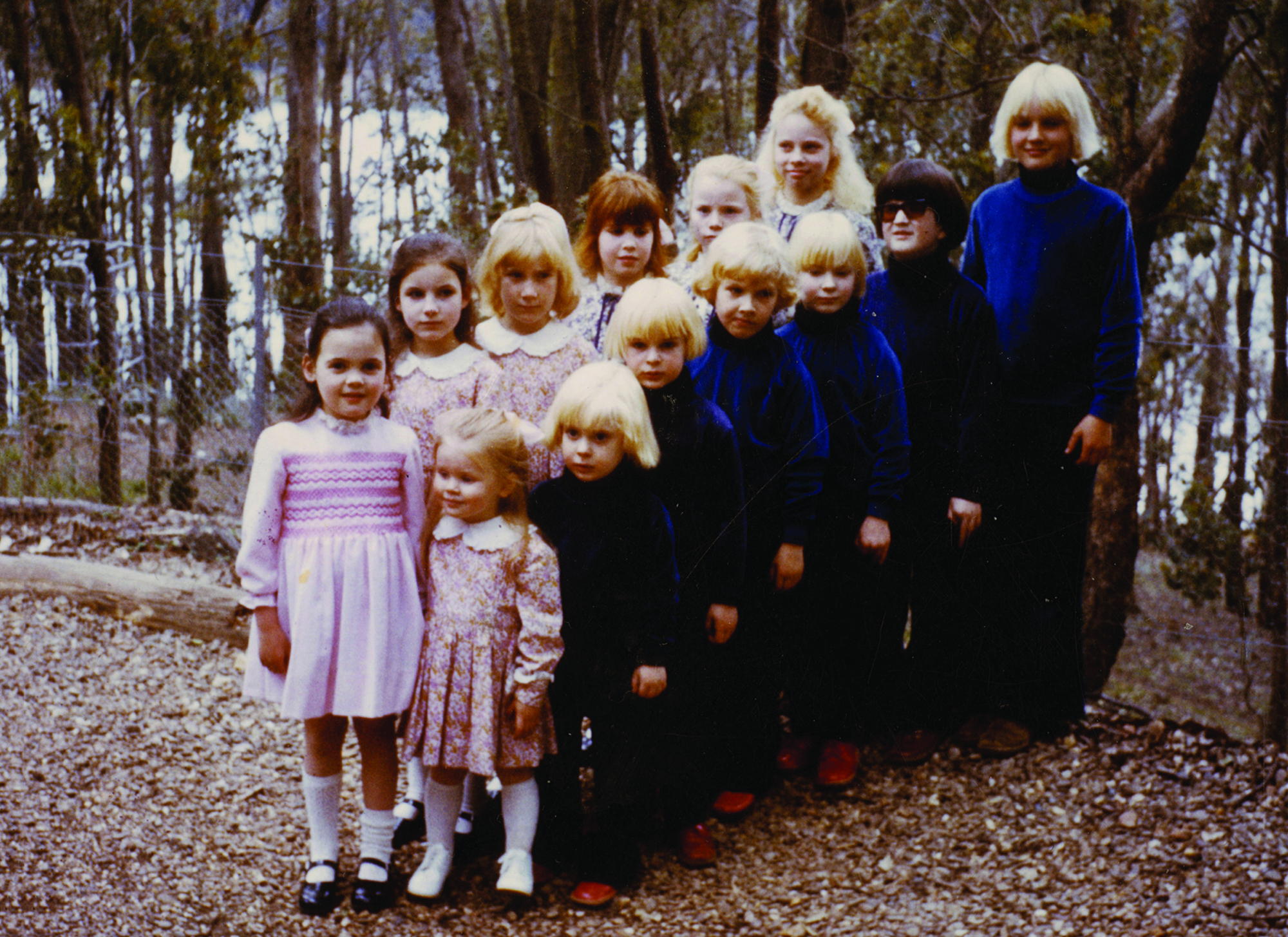Founded in 1963 by yoga teacher Anne Hamilton-Byrne and renowned physicist and scholar Raynor Johnson, The Family was a secretive cult with powerful connections within Melbourne society. With the motto ‘unseen, unheard, unknown’, it worshipped its matriarch as the reincarnation of Jesus Christ as part of its vague mishmash of Eastern and Western mythology. Hamilton-Byrne, husband Bill, and cult members referred to as ‘aunties’ and ‘uncles’ bought a property near Lake Eildon (about two hours from Victoria’s capital), and started grooming a total of twenty-eight children to become a ‘master race’ ready to inherit the Earth after an undefined global catastrophe would bring it to ruin.
The cruel treatment of the children, many of whom were obtained via forced, illegal adoptions facilitated by medical staff and social workers who were members of the cult, eventually led to a police raid of the complex in 1987, during which six children were removed and placed into foster care. Two years later, special task force Operation Forest was established in an attempt to bring Hamilton-Byrne to justice. But, after five years of investigations and a manhunt that finally resulted in her arrest at her American home in the Catskill Mountains, subsequent extradition and Australian court appearance, she and her husband were merely nailed down on a charge of falsifying documents, resulting in a A$5000 fine each. Even though many of the children abused under Hamilton-Byrne’s hand and command continue to petition for further inquiries into the cult and for formal compensation, The Family operates in Victoria to this day with relatively little interference, its ageing matriarch slowly succumbing to dementia in a Melbourne nursing home.
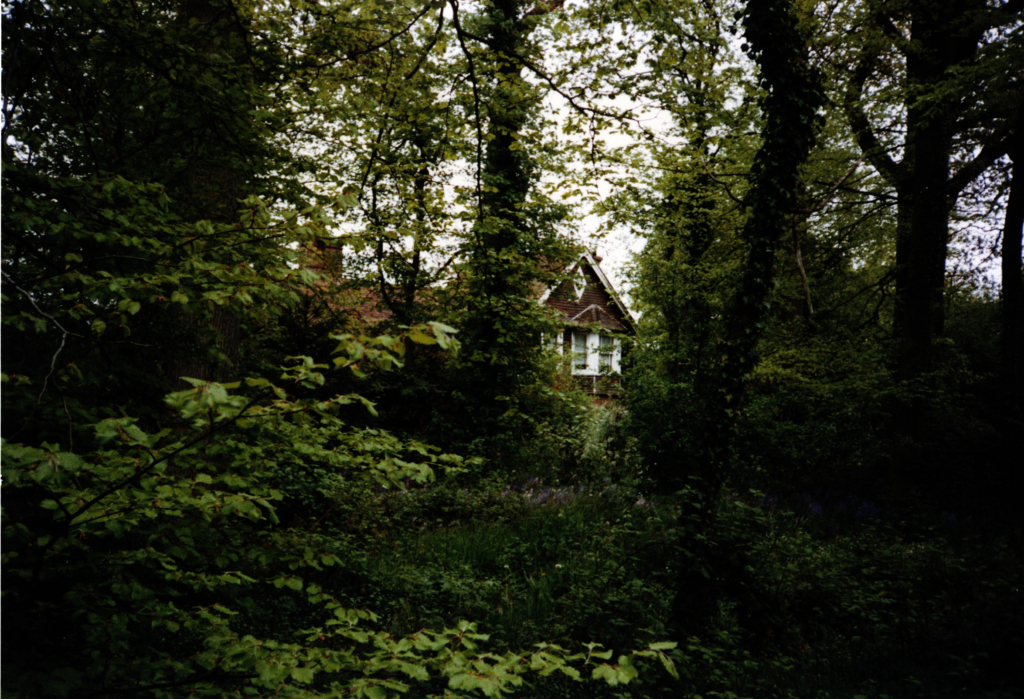
It’s a sinister story, one that, even after four decades of intermittent legal inquiries, extensive journalistic coverage, a memoir by one of the former child members[1]Sarah Hamilton-Byrne, Unseen, Unheard, Unknown: My Life Inside The Family of Anne Hamilton-Byrne, Penguin Books, Melbourne, 1995. and, now, a feature documentary – Rosie Jones’ The Family (2016) – and companion book,[2]Chris Johnston & Rosie Jones, The Family, Scribe, Melbourne, forthcoming at the time of writing. presents as many questions as answers.
It is well established that documentary filmmaking, despite the ‘true’ nature of its subject matter, requires no less planning, cutting, editing and shaping than any other form of visual storytelling. Documentarians have an infinite number of choices available when presenting a given story, and the end results can differ as dramatically as a vlogger’s video diary would from an international blockbuster.
It’s a sinister story, one that, even after four decades of intermittent legal inquiries, extensive journalistic coverage, a memoir by one of the former child members and, now, a feature documentary … presents as many questions as answers.
Film scholar Bill Nichols identified six ‘documentary modes’ to describe the different approaches to nonfiction filmmaking, and the different goals and narratives they serve.[3]Bill Nichols, Introduction to Documentary, Indiana University Press, Bloomington, 2001. Most casual viewers of the form would primarily associate it with the ‘expository mode’, as famously demonstrated by David Attenborough’s extensive library of nature documentaries. These films rely heavily on narration and guidance by a figure of authority and have a clear-cut conclusion or goal. Expository documentaries seek to educate or persuade the viewer about established facts or clearly formed points of view, and leave little for interpretation or questioning. The success of an expository documentary rests on its clarity and persuasiveness.
At the opposite end of the spectrum lies the ‘poetic mode’, which often has no narration at all and – unlike the expository mode, which uses images primarily to illustrate the narrative – solely relies on carefully intercut imagery and music to create atmosphere and meaning for the audience. The truth it seeks to convey is less immediate, more intuitive, and may be deeply individual for each viewer. Ron Fricke’s meditations on humanity and history – including Samsara (2011) and Baraka (1992) – fall under this genre.
Somewhere between the two extremes lies the ‘reflexive mode’, which, apart from conveying the truth in front of the camera, also reflects on the nature of documentary itself, often putting into question the very existence of truthful representations of reality. Much like the expository mode, it often relies on narrators or talking-head interviews, but its use of music and sound editing as well as visual storytelling seeks to alienate the audience just enough to make them aware of the constructedness of what is presented, inviting personal reflection on whether to accept it as truth. Errol Morris’ noir classic The Thin Blue Line (1988) continues to be seen as the quintessential example of this technique.
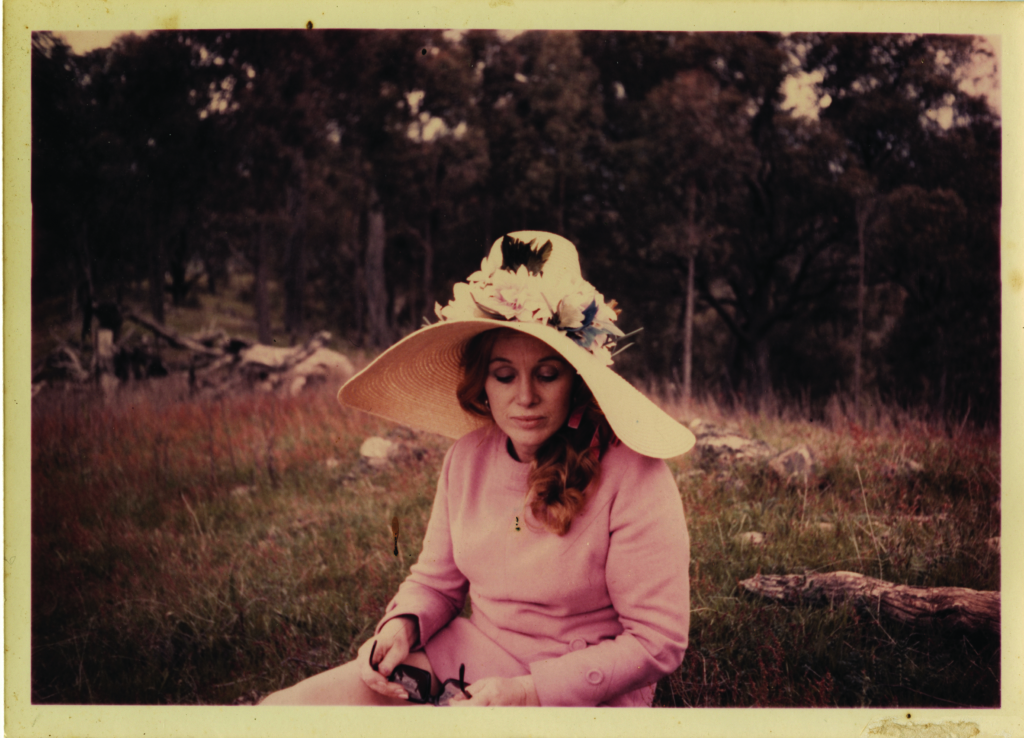
Although the modes of documentary are defined by their differing or even conflicting approaches and goals, most films will not fit neatly into just one category. The Family is a prime example of this, with Jones utilising techniques from the expository, poetic and reflexive modes to bring to life and make sense of one of the most incomprehensible stories in Australia’s recent history. She does an admirable job conveying an atmosphere of menace, mania and confusion. The stunning Victorian landscape is beautifully captured by cinematographer Jaems Grant and aerial crew members Dale Cochrane and John Mantovani, and the understated score by Amanda Brown effectively provides emotional scaffolding at key moments. Indeed, it’s in the poetic mode that The Family is most successful, as voiceovers of Hamilton-Byrne’s sermons are interspersed with psychedelic imagery, news footage and landscape shots to convey the inner life of the children as they were beaten, starved, isolated and forced to take LSD.
Jones largely builds her film around the testimony of former Victoria Police senior sergeant Lex de Man, who first came into contact with The Family a few months after the police raid that rescued six children; one of them, Adam Lancaster (then Roland Whitaker), was suspected of setting fire to Monbulk Catholic School, and de Man was sent to investigate as part of the arson squad. Six years later, in 1993, it would be de Man – as the head of Operation Forest – who would close in on Hamilton-Byrne and her husband, ultimately leading to her only criminal charge and conviction. While the majority of the film consists of archival footage, talking heads and scenic shots, de Man’s story is brought to life by a re-enactment that pays homage to Morris’ The Thin Blue Line. The audience follows a young de Man as he probes into the cult, uncovering how the group could have done what it did and get away with it for so long. Interviews with several former Family children as well as defunct and current adult members provide context and inside views into the crimes de Man encounters at each step.
There never was a satisfactory resolution to the child-abuse claims, and many lines of inquiry into just how far the cult’s influence extends remain open to this day. Each attempt to clarify certain points of contention merely exposes new strands that have been unexplored.
As the re-enactments of de Man’s journey introduce a performative aspect into the film, it begins to venture into Nichols’ reflexive mode, drawing attention to how what is seen on screen is an appropriation or approximation of the truth. This is further achieved through a subtle editing technique used during many of the talking-head interviews, whereby, at certain points, the audio track runs on uninterrupted as the camera skips to frame the subject slightly differently, or lingers on a particular resting facial expression while their voice continues on. These are beautiful, expertly rendered moments, creating metaphors of lost space and time, while displaying sometimes anxiety and disorientation in the skipped images, sometimes deep, abiding sadness in the subjects’ quiet faces as they tell their stories in voiceover. All the interviewees, particularly the former children of the cult, are deeply sympathetic – and, for their testimonies and Jones’ sensitive handling of them alone, this film deserves attention.
Unfortunately, Jones’ ventures into the poetic and the reflexive further confuse an already-opaque story, and this is where The Family fails to deliver on what it seems to promise: an exposition on Australia’s most notorious cult. For all its research, archival footage and access to insider testimony, the film, much like the cult itself, seems to leave many questions unanswered.
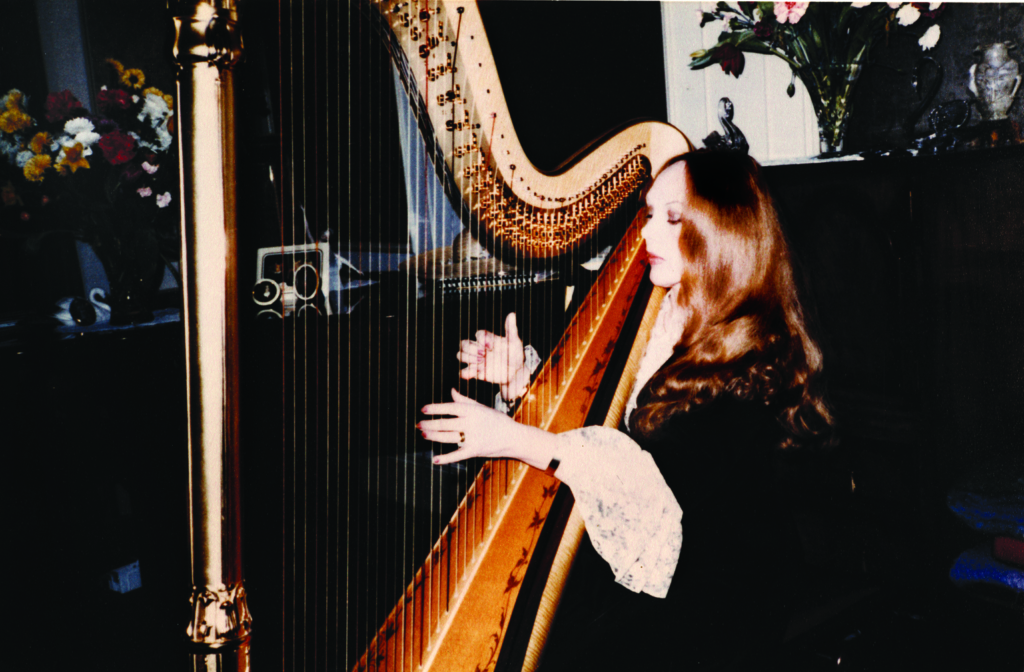
This is, in part, because of the subject matter itself – after all, there never was a satisfactory resolution to the child-abuse claims, and many lines of inquiry into just how far the cult’s influence extends remain open to this day. Each attempt to clarify certain points of contention merely exposes new strands that have been unexplored. The allegations range from the gut-churning to the outlandish. A brother pleading for an investigation into a 28-year-old alleged suicide to be reopened, as he suspects the cult’s involvement.[4]See Melissa Iaria, ‘Bid to Reopen Inquest Fails 22 Years Later’, The Sydney Morning Herald, 9 February 2011, <http://www.smh.com.au/breaking-news-national/bid-to-reopen-inquest-fails-22-years-later-20110209-1amwb.html>, accessed 14 October 2016; and James Campbell, ‘State Probe After Cult Case Rejected’, Herald Sun, 6 March 2011, <http://www.heraldsun.com.au/news/victoria/state-probe-after-cult-case-rejected/story-e6frf7kx-1226016398378>, accessed 14 October 2016. Sarah Moore (formerly Hamilton-Byrne), in her memoir, questioning whether The Family’s oft-cited practice of bleaching the children’s hair to make them look like biological siblings did not have a much darker motive, and suggesting child trafficking as one of the many obscure income sources that contributed to the matriarch’s multi-million-dollar estate.[5]An excerpt of Moore’s memoir discussing these fears can be read at <http://www.leavingsiddhayoga.net/unseen.htm>, accessed 14 October 2016. The revelation that one of the world’s most infamous platinum blondes – Julian Assange – was involved with the cult during his childhood,[6]Simon Brown, ‘Julian Assange and the Cult Leader Close to Death’, Meanwhile, in Australia (and the Antipodes), Quora, 22 July 2013, <https://newsfromdownunder.quora.com/Julian-Assange-and-the-cult-leader-close-to-death>, accessed 14 October 2016. his uncompromising quest for transparency perhaps developing in opposition to The Family’s ‘unseen, unheard, unknown’ mantra. On the conspiracy-theory side of the spectrum, alleged connections to the Australian secret-service community, Swedish fascists, Big Pharma and, most obscurely, dance music are proposed.[7]‘Julian Assange, Santiniketan Park Association Kids and Dance Music’, Lys-d’Or, 1 May 2011, <https://lys-dor.com/2011/05/01/julian-assange-santiniketan-park-association-kids-and-dance-music/>, accessed 14 October 2016. In poorly edited blogs and comment sections of news articles, The Family’s child victims also continue to find one another and connect.[8]See, for example, the comment sections of Sarah Moore, ‘Why I See Anne – by Dr Sarah Moore/Hamilton-Byrne’, Sarah’s Stuff, 15 August 2009, <http://drsarahmoore.blogspot.com.au/2009/08/why-i-see-anne-by-dr-sarah.html>, accessed 14 October 2016; and Abby Ballard, ‘Inside the Terrifying Australian Cult Where Children Were Brainwashed and Abused’, Mamamia, 24 July 2016, <http://www.mamamia.com.au/children-stolen-at-birth/>, accessed 14 October 2016. As Hamilton-Byrne’s health is rapidly declining, it seems unlikely any of them will be granted the resolution they may be seeking.
The evidence Jones would have had to peruse and evaluate to create her film must have been overwhelming and labyrinthine in some areas, and frustratingly sparse in others; however, not all of the resulting lack of clarity can be blamed on the topic. The story comes together via the narrative of over a dozen interviewees, many of whom appear both in talking-head interviews and in archival footage of police questionings, photographs and home movies. While the film usually identifies the speaker and their relationship to the cult in talking-head shots, often the viewer is left to try and match each face with its thirty-year-younger version when it appears in grainy footage without identification, creating disorientation that could have otherwise been easily avoided.
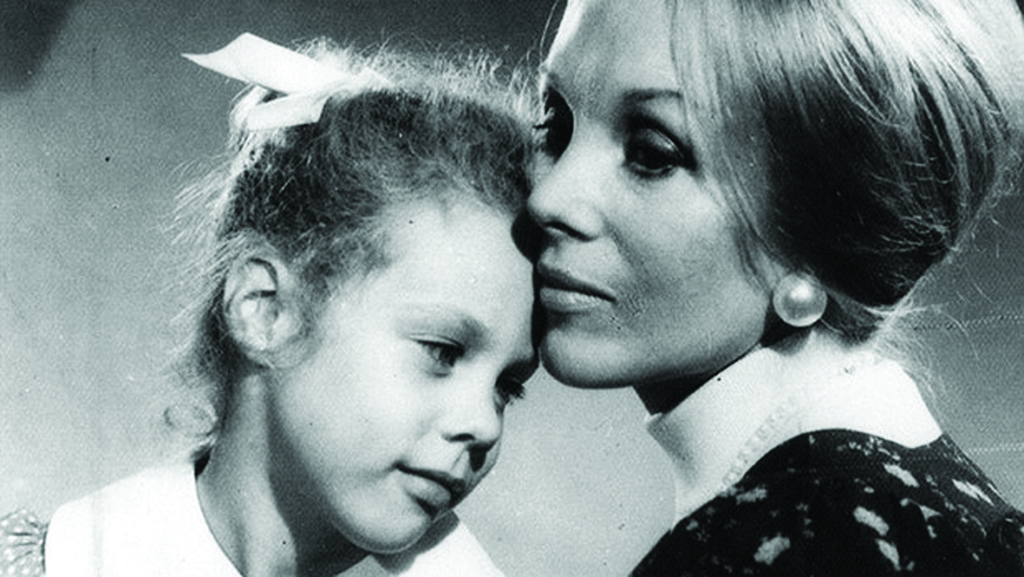
Similarly, early in the film, de Man mentions that authorities were only aware of fourteen or fifteen children who had passed through the cult, leaving a further thirteen unaccounted for. It is briefly suggested and immediately debunked that children’s remains may have been buried on the property at Lake Eildon. But this is a small thrill the film pays for from then on, as it is never definitively established whether the children who were unlawfully obtained via the cult’s adoption scheme counted towards the ones law enforcement knew about (albeit as Hamilton-Byrne’s ‘natural’ children via forged records) or not. By the end of the film, the viewer is left to figure out whether these lost children were indeed the ones we just saw on screen, or if the guilt of Hamilton-Byrne’s cult may extend to even more sinister deeds.
Perhaps Jones was too ambitious in her project, seeking to clarify an exceedingly unclear story while also conveying its atmosphere of bewilderment and menace, or perhaps there simply is no way to give straightforward explanations for what happened at Lake Eildon. The forthcoming companion book may satiate those thirsting for definitive truths, or it may simply add to the growing body of inquiries that fail to nail down exactly what, why and when events took place within The Family. As it stands, The Family is a gorgeous, emotional gut-punch that interrogates many of the legal and medical protections we as Australians tend to assume are unshakeable in this country. It does not have all the answers the viewer may seek. But, then again, as Nichols has taught us, there is no reason it has to.
Endnotes
| 1 | Sarah Hamilton-Byrne, Unseen, Unheard, Unknown: My Life Inside The Family of Anne Hamilton-Byrne, Penguin Books, Melbourne, 1995. |
|---|---|
| 2 | Chris Johnston & Rosie Jones, The Family, Scribe, Melbourne, forthcoming at the time of writing. |
| 3 | Bill Nichols, Introduction to Documentary, Indiana University Press, Bloomington, 2001. |
| 4 | See Melissa Iaria, ‘Bid to Reopen Inquest Fails 22 Years Later’, The Sydney Morning Herald, 9 February 2011, <http://www.smh.com.au/breaking-news-national/bid-to-reopen-inquest-fails-22-years-later-20110209-1amwb.html>, accessed 14 October 2016; and James Campbell, ‘State Probe After Cult Case Rejected’, Herald Sun, 6 March 2011, <http://www.heraldsun.com.au/news/victoria/state-probe-after-cult-case-rejected/story-e6frf7kx-1226016398378>, accessed 14 October 2016. |
| 5 | An excerpt of Moore’s memoir discussing these fears can be read at <http://www.leavingsiddhayoga.net/unseen.htm>, accessed 14 October 2016. |
| 6 | Simon Brown, ‘Julian Assange and the Cult Leader Close to Death’, Meanwhile, in Australia (and the Antipodes), Quora, 22 July 2013, <https://newsfromdownunder.quora.com/Julian-Assange-and-the-cult-leader-close-to-death>, accessed 14 October 2016. |
| 7 | ‘Julian Assange, Santiniketan Park Association Kids and Dance Music’, Lys-d’Or, 1 May 2011, <https://lys-dor.com/2011/05/01/julian-assange-santiniketan-park-association-kids-and-dance-music/>, accessed 14 October 2016. |
| 8 | See, for example, the comment sections of Sarah Moore, ‘Why I See Anne – by Dr Sarah Moore/Hamilton-Byrne’, Sarah’s Stuff, 15 August 2009, <http://drsarahmoore.blogspot.com.au/2009/08/why-i-see-anne-by-dr-sarah.html>, accessed 14 October 2016; and Abby Ballard, ‘Inside the Terrifying Australian Cult Where Children Were Brainwashed and Abused’, Mamamia, 24 July 2016, <http://www.mamamia.com.au/children-stolen-at-birth/>, accessed 14 October 2016. |
